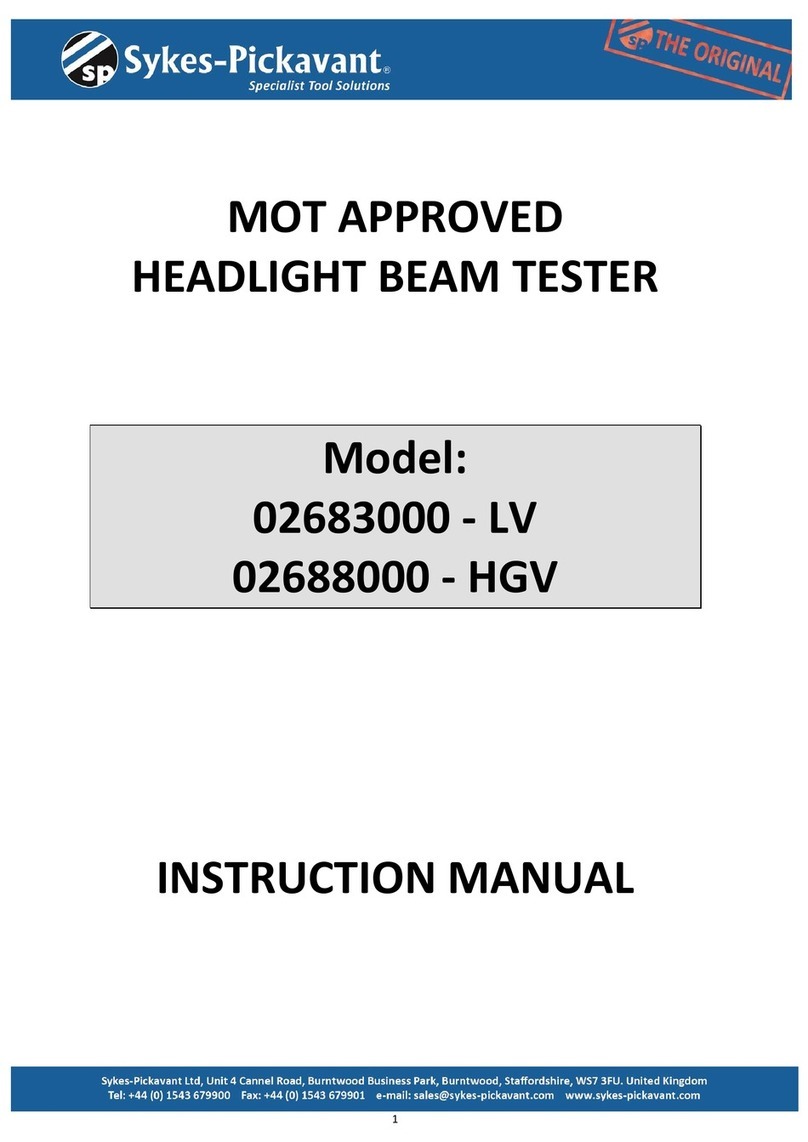
2
INDEX
TAKING DELIVERY OF THE DEVICE .....................................................3
INTRODUCTION.......................................................................................3
TECHNICAL DATA ...................................................................................3
SYMBOLS USED IN THE MANUAL.........................................................4
PREPARATION OF THE DEVICE............................................................5
HANDLING THE PACKAGED DEVICE..................................................5
HOW TO UNPACK THE DEVICE..........................................................5
DESCRIPTION OF THE DEVICE..............................................................6
GENERAL SAFETY PRECAUTIONS.......................................................9
PREPARATION.......................................................................................10
ASSEMBLING THE MIRROR VISOR ..................................................10
PREPARATION OF THE VEHICLE .....................................................10
WORK SURFACE................................................................................10
ALIGNMENT OF THE VEHICLE.............................................................11
POSITIONING......................................................................................11
POSITIONING WITH THE HELP OF THE LASER POINTER.............11
ALIGNMENT OF THE VEHICLE.............................................................12
ALIGNMENT WITH THE MIRROR VISOR.........................................12
ADJUSTMENT......................................................................................12
ALIGNMENT WITH THE LASER VISOR............................................13
HEADLIGHT BEAM TESTING ART. 2400 AND 2400/D........................14
ADJUSTMENT......................................................................................14
TESTING THE LOWER BEAM HEADLIGHT.......................................14
TESTING THE UPPER BEAM HEADLIGHT........................................14
HEADLIGHT BEAM TESTING ART. 2400 AND 2400/D........................15
TESTING THE FOGLIGHT BEAM.......................................................15
HEADLIGHT BEAM TESTING ART. 2400/ I ..........................................16
PREPARATION....................................................................................16
ADJUSTMENT......................................................................................16
TESTING THE LOWER BEAM HEADLIGHT.......................................16
HEADLIGHT BEAM TESTING ART. 2400/ I ..........................................17
TESTING THE UPPER BEAM HEADLIGHT........................................17
TESTING THE FOG LIGHT .................................................................17
ADDITIONAL INSTRUCTIONS...............................................................18
REPLACING THE LASER VISOR BATTERIES..................................18
REPLACING THE BATTERIES ART. 2400/D......................................18
REPLACING THE BATTERIES ART. 2400/I .......................................18
ADDITIONAL INSTRUCTIONS...............................................................19
CLEANING AND SERVICING..............................................................19
DEMOLITION AND DISPOSAL............................................................19






























